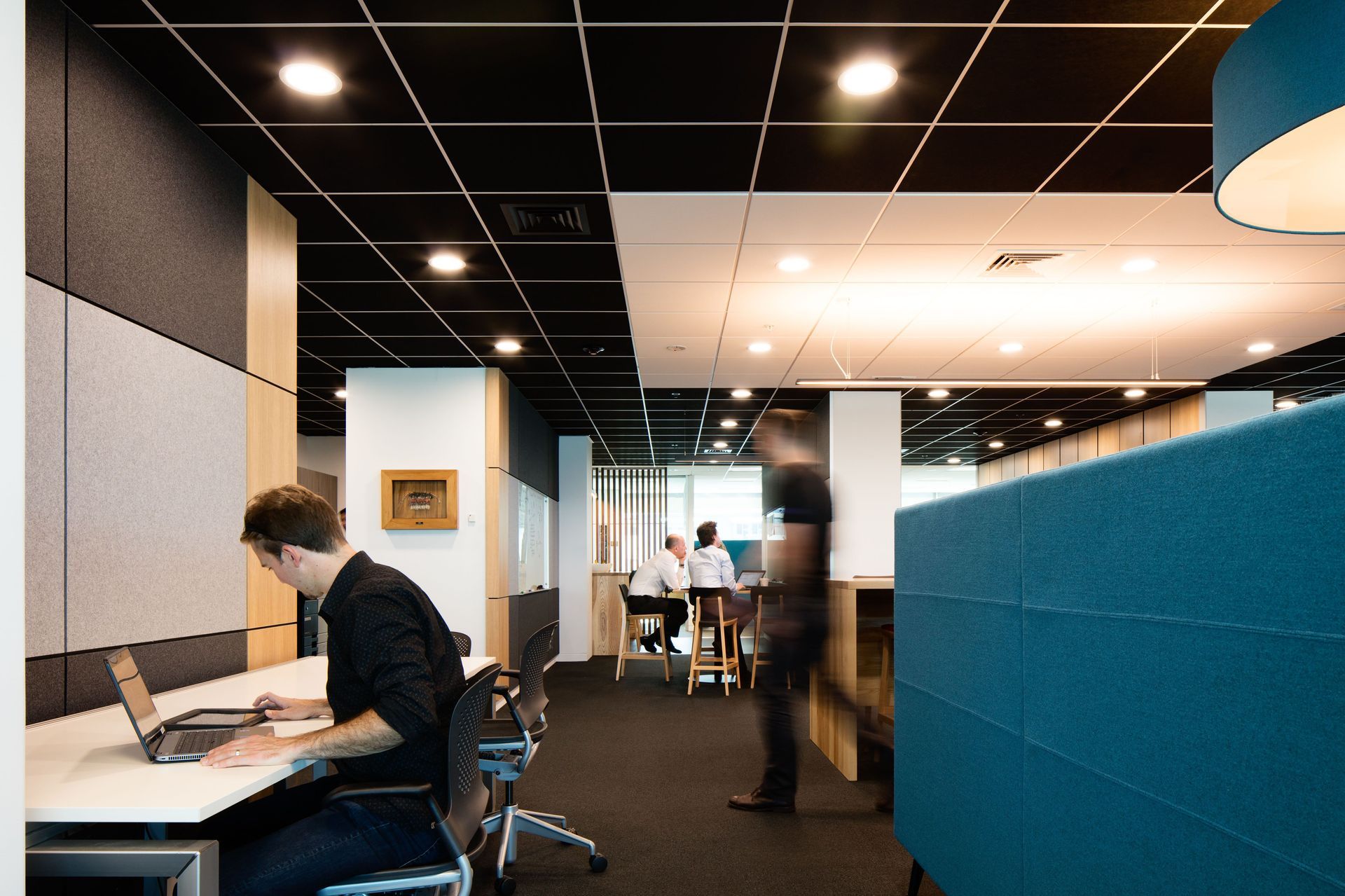Flexibility and trust: the architecture of the modern workplace
Written by
25 February 2018
•
4 min read

In order for the modern language of workplaces to be a success, the change needs to be driven by those in management capacities. The flexible workspace is one that is driven by an environment of trust and freedom, within the context of clear accountabilities and deliverables.
“It can be a big shift from traditional workplaces and often, we hear some negativity about the idea of flexible working options when running staff workshops,” Studio Pacific’s Michael Davis says. “What’s interesting is when we speak to those same people again after they have experienced working in one, and they come back and talk about how much they love having the freedom to choose how and where they work.”
“When you look at what makes people like their work or workplace, a lot of it is about having choice and control about the way they work and where they work. That’s what a modern, flexible workplace offers that a traditional one often doesn’t.
“Within the changing scope of workplaces, another thing we are going to see more of in the future is the replacement of linear, repetitive processes by technologies like robots so what that means is people’s work is going to be more and more knowledge-based work in which the demand for project spaces is central as well as the demand for flexibility in their working areas,” Michael says.
“You can almost see when you look at a traditional office layout, the linear aspect of a lot of the work that goes on, with work moving from desk to desk and person to person. You can often look at a floorplan and essentially read where these linear processes happen.”
While that still will sometimes have appropriate applications, things are changing to more matrixed interconnected arrangements. “It used to be that demand for project-specific spaces was minimal - for example, the traditional 'war room’ - but now that demand is really growing with people wanting spaces to easily assemble and work together on projects.”
Desk sizes are smaller too in contemporary workspaces, simply because our computers are reducing in size, and the majority of people are working more predominantly in the virtual environment and moving away from paper-based work.
“In many cases, people are achieving flexible workspaces with the use of furniture rather than building enclosed spaces, which has many benefits,” Michael says. “Not only does it mean a tenant can move the furniture around to suit their needs as they change, they can also take it with them when a tenancy ends. It also means less cost than creating workplaces with walls, and it can simplify the consent issues associated with things like sprinklers and seismic restraint.”
Essentially, the architecture of the modern workplace involves creating a choice of spaces and working options, ranging from separated focus areas to areas of collaboration, and different styles of desks and furniture to give employees the freedom to make choices about the way they work and when, with the three key options ingredients being control over: privacy, personal space, and freedom from interruption. But, for it to work, it has to be tied in to an evolving management approach that is based on the trust of staff.
“An emerging model within this is the ability for people to ‘flex' from a particular desk or primary work-point,” Michael says. “It’s something some of the larger corporations have noticed their staff like to do; that is, they loosely base themselves at one desk but move from it when they choose to use other work-points, while knowing there is a base of sorts where their belongings are left.”
Have a look at some of Studio Pacific’s modern places on ArchiPro here for some inspiration about what you could achieve in your next project.


